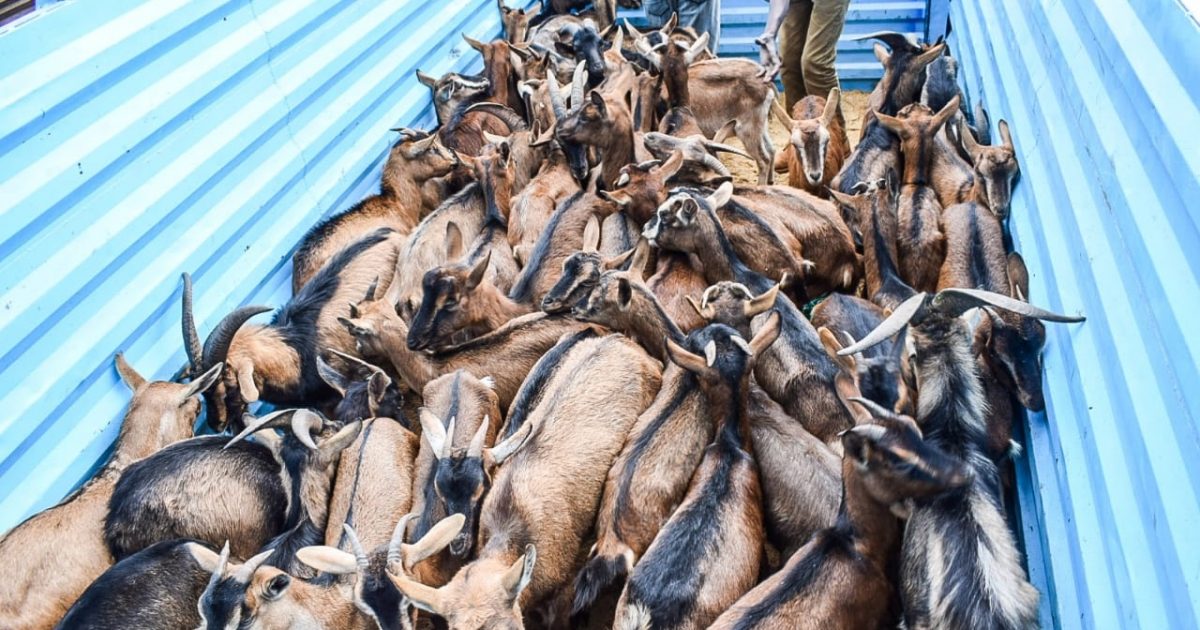On the fringes of the picturesque Menengai Crater within Bahati Sub-County eight youthful women are toiling on a small farm feeding 17 dairy goats.
The members of Kazi na Bidii Youth Group are beneficiaries of a dairy goat rearing programme rolled out by the County Government of Nakuru seeking to improve the livelihoods of women and youth groups in rural parts of the devolved unit.
Members of the youth group according to the Chairperson, Ms Esther Gathoni, have also received training on home-based manufacture of value-added goat products such as pasteurized milk, yoghurt, butter and cheese.
Ms Gathoni, an Agricultural Economics graduate from Egerton University said farmers who rear five dairy goats stand to benefit 50 per cent more than those keeping one dairy cow as goats do not need much feeds and space to keep yet their milk always retails at a higher price as compared to that of a cow.
“Farmers need to be aware that a half an acre of Napier grass can support five dairy goats while an equal amount of Napier grass only supports one dairy cow. With this knowledge out there, farmers can make the right decision on which venture to pursue,” explained Ms Gathoni.
She stated that one dairy cow can yield 20 litres of milk a day which retails at averagely Sh40 per litre while five dairy goats produce 14 litres of milk daily fetching Shs140 per liter.
“Goat milk production is a good source of income and an avenue to improve rural areas’ economy as consumer acceptance of goat milk and its products is growing. We are also venturing into value addition,” explained Ms Gathoni.
On value addition, Ms Gathoni explained that her group was conducting several experiments to manufacture mozzarella cheese from blends of cow and goat milk.
Kazi na Bidii Youth Group is one of the 80 farmer groups in the county, with a total membership of over 500 that have received over 1,200 Alpine and Toggenburg breeds from the devolved unit’s department of Agriculture, Livestock and Fisheries.
County Senior Veterinary Officer Dr Christopher Auma, said last week 125 Alpine dairy goats had been distributed to 41 farmer groups in Mauche ward, Njoro Sub County while a further 157 Alpine and Toggenburg breeds had been donated to farmers in Kabazi and Subukia Wards.
Dr Auma indicated that the devolved unit kicked off the programme last year after procuring superior Kenya Alpine and Toggenburg dairy goat genetic material which he observed were tough and adaptable to various climatic conditions and yields more milk with proper breeding, good nutrition, appropriate housing and management of diseases and pests.
Other goat breeds kept in Kenya are Oberhasi, Galla, Small East African Goat and Boer. Most farmers keep Alpines and Toggenburgs mainly for milk.
“Alpines and Toggenburgs are hardy and have the ability to adapt to all agro-climatic conditions while producing to their maximum. The two breeds are the best milk producers and that lactating rarely reduces milk output until they are served. They can be milked for up to eight months after calving.
The genetic material that most dairy goat farmers are using today was imported from South Africa many years ago. Farmers are reusing the same bucks for breeding and this has resulted in inbreeding, low production and stunted growth in animals,” explained the Senior Veterinary Officer.
He noted that the main challenge facing the dairy goat subsector was poor management of the animals, diseases and poor breeds.
Dr Auma revealed that studies have confirmed that nutrients like iron, calcium, magnesium and phosphorus in goat milk were easily digested and absorbed by the body than those in cow milk.
“The demand for goat milk is growing as it is easier to digest and has higher quantities of amino acids such as tryptophan and calcium than cow’s milk which are crucial for health teeth and bones.
A cow’s milk trails in fatty acid content at 17 percent compared to goat milk’s 35 percent making it more nutritious. It has lower levels of cholesterol making it a safer option for those seeking healthier lifestyles,” he added.
He said all beneficiaries of the programme are small holder farmers who cannot keep a cow due to their small land sizes or cost of feeding the animal and now prefer to rear dairy goats.
The programme he added, has also equipped the farmer groups with knowledge on the different goat breeds, feeding, pests, prevention and cure of most probable diseases and housing.
He advised dairy goat farmers to construct pens that shield the animals from wind, direct sunlight and rain and must have adequate resting areas if they are to produce more milk.
“A good goat shed should have separate feeding and resting areas. And it should be raised two feet from the ground, should be properly ventilated, well-lit and kept neat, clean and dry as dampness attracts pests and diseases,” stated Dr Auma.
He said that sanitation, decontamination and ventilation in the pens are necessary to rid mites off goats, which cause both health and economic losses.
“Many small holder farmers have opted for zero-grazing systems as it limits the dairy goats’ exposure to parasites and infectious diseases as compared to those in free-range. Minimized movements lower their risk of coming into contact with disease causing organisms,”
He, however, noted that poor ventilation in zero grazing units may cause respiratory diseases, the leading cause of death in goats.
Dr Auma explained that goats kept under zero-grazing should be fed on Napier grass, Rhodes grass, Kikuyu grass, maize and hay.
“They also love Lucerne, calliandra, leucena, desmodium, mulberry, sweet potato vines, cotton seed cake, sunflower cake and soy bean cake for proteins, feeds that are, however, harder to come by,” he added
He said that the County Administration was ensuring that the dairy goats were dewormed and vaccinated on a regular basis as they are sensitive to pests and diseases.
By Anne Mwale





